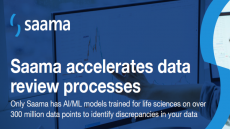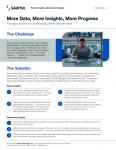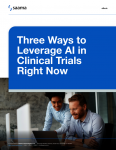What’s next for M&A? Precision medicine, diagnostics, new customers to disrupt pharma services market

Crosstree provides mergers and acquisitions (M&A) and financing advisory services. The company recently acted as the exclusive financial advisor to Genstar Capital on the acquisition of Advarra. It also advised transactions that involved companies such as GSK, Quest Diagnostics, Iqvia, Icon, LabCorp, WIRB Copernicus Group (WCG), DrugDev, Navitas Life Sciences, and Wuxi AppTec, among others.
The company focuses exclusively on clients in pharma services, diagnostics, and digital health space– the confluence of which Shane Senior, Crosstree managing director, described as the ‘core solutions’ to enable precision medicine.
“From 2008 until 2018, precision medicine grew at 30% per year … Rare and orphan grew about 10-12%, and traditional drugs only grew 1-2%,” said Senior. Looking forward, the forecast is about 10% for precision and specialty, and 2-3% for traditional medicine, per the company’s research.
“If you step back and look at the patient journeys and the high touch sophistication that’s required for precision medicine trials and for specialty rare and orphan trials, it’s apples and oranges with a diabetes trial,” added Senior, “where every diabetes trial looks the same.”
Conversely, a rare disease study can be very ‘bespoke,’ he said, offering the example of the Leukemia and Lymphoma Society’s (LLS) Beat AML Master Clinical Trial, which has eight arms and a genetic testing component.
Winner takes all
Pricing correspondingly is likely to have a profound impact on the market for rare disease therapeutics. As Senior explained, a company second to market is competing with an incumbent for a small pool of patients, and “some of these medicines are winner takes all.”
“Once those drugs [for rare diseases] are approved the price isn’t coming down,” Senior said. “If you’re the only one that cures blindness, why should you ever agree to value-based contracting? You’re not.”
“The implications of our medical system and employer-based insurance are going to have some impact outside of drug development as well, as more and more of these drugs come to market,” he added.
To meet the needs of these increasingly complex trials, companies have expanded their offerings through M&A, looking to stand out in a historically ‘monolithic’ industry: “All of the CROs look the same, they all say they can do the same [work],” said Senior.
In 2008 the industry’s expansion was mainly geographic and the partnership model was transitioning to a one-vendor model. Now, service providers are developing the capabilities to run more complex trials, specifically in areas such as statistics, site and patient engagement solutions, data analytics, and regulatory affairs.
“There are a variety of specialty capabilities that are needed to execute trials for targeted medicines,” said Senior, “some of which CROs have … and some that they need to expand on in order to be competitive and effective.”
The industry also is moving toward ‘more agile’ solutions focused on the patient and sites. Said Senior, “There’s really a focus on the patient at the center, and that’s been a lot of lip service until now – I think it’s finally happening.”
The rise of diagnostic testing
As for future transactions in this space, Senior expects to see diagnostics continuing to play an increasingly important role in the market, with approximately 80% of precision medicines requiring a diagnostic test or procedure.
“If you develop an assay and a biomarker for a drug in a clinical trial, once that goes commercial, if those diagnostics companies have commercial capabilities, then you become the lab for that disease and that product,” he explained. As such, diagnostic test companies will become diagnostics solutions and tools companies.
Other areas that will continue to grow in importance are regulatory affairs and market access, he said, predicting that there also will be changes in how data is handled in clinical trials. Specifically, data lakes and other solutions are going to emerge.
The caveat though, is that the industry is 10 years behind the rest of the economy. “These things will happen … It’s just when,” said Senior, explaining that one of the biggest mistakes that investors make is investing in the right idea 10 years too early.
“There’s been such a profound change in the capabilities that are needed and [M&A is] not going to stop in the next five or six years,” he said. “This is something that we’re going to be figuring out for quite some time.”
An evolving customer base
According to Senior, the role that academic centers play in this also is going to affect the industry. “If the patient is going to an academic medical center for their care anyways and the patient is the drug, in cancer immunology, for example, then why do we need a pharmaceutical company in between the academic medical center and the patient,” he said.
In line with this, former FDA Commissioner Scott Gottlieb indicated that the agency is going to have a willingness to grant academic medical centers biosimilars. And while this won’t happen tomorrow, Senior noted that this will change, in many instances, the customers of the pharma services companies.
“Academic medical centers are [clinical trial] sites, aren’t they? They are where a lot of these specialty patients are found – and they aren’t going to consolidate … So how do we transition when our customer changes,” added Senior.
“These are the really interesting things that are happening in the market,” he said. “It’s an exciting time.”














